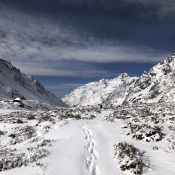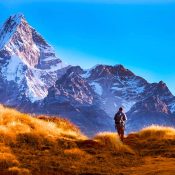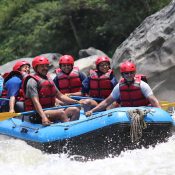10 Things Every Biker Should Know Before Riding in the Himalayas

10 Things Every Biker Should Know Before Riding in the Himalayas
10 Things Every Biker Should Know Before Riding in the Himalayas
I still remember the first time my wheels touched Himalayan soil. The early morning fog curled like smoke around the pine trees, the cold bit into my fingertips, and the only sound was the crunch of my tires on the gravel. It wasn’t just a ride—it was a revelation. The Himalayas don’t just challenge your body; they test your soul.
If you’re dreaming of pedaling through the clouds, chasing prayer flags flapping in the wind, and riding alongside the spine of the world, here’s what you need to know—learned the hard way, with sweat, mud, and a little blood.
1. The Mountains Are Bigger Than Your Ego
I came in overconfident. “I’ve done trails before,” I told myself. But by Day 2, at 3,500 meters above sea level near Manang, I was breathless after just ten minutes.
Tip: Start low. Acclimatize slowly. It’s not a race—unless it’s against your own patience.
2. Pack Like a Monk, Not a Tourist
I thought I needed everything. I didn’t. What I did need: layers that kept me dry, warm, and mobile. That extra hoodie? Dead weight.
Tip: Layer smart—base, fleece, shell. And never underestimate a good pair of gloves and thermal socks.
3. Your Bike Isn’t Just Gear—It’s Your Partner
I treated my bike like gear until I started relying on it for survival. Punctures, broken chains, loose brakes—these trails will expose every weakness.
Tip: Get it trail-tested. Tubeless tires, strong disc brakes, and front suspension are essentials. Learn basic repairs or risk walking… for hours.
4. Drink Before You’re Thirsty
By the time I felt dry-mouthed near Kagbeni, it was already too late. The altitude dehydrates you quietly.
Tip: Sip often. Add electrolyte tablets to your water. A hydration pack beats a bottle on bumpy trails.
5. Maps Lie. Locals Don’t
One app said I had 3 km left. A yak herder laughed and said, “More like 8, brother.” He was right.
Tip: Use GPS apps like Komoot or Gaia, but always ask locals—especially in places like Lower Mustang or Langtang.
6. Permits Aren’t Just Formalities
At the Annapurna Conservation Area checkpoint, a friend got turned back. No permit.
Tip: Plan ahead. Trekking areas like Upper Mustang or Manaslu require permits. Sort it before you saddle up.
7. Every Trail Is a Test
Loose gravel, river crossings, vertical climbs—I faced them all. At one point, I had to carry my bike across a landslide zone.
Tip: Train for endurance and control. The trail will humble you no matter how strong you are.
8. Food is Fuel—Not a Luxury
There was a day I survived on two protein bars. Villages were hours apart.
Tip: Carry light, high-calorie snacks. Think nuts, bars, and dried fruits. Eat before you’re hungry.
9. The Ride Is Mental, Not Just Physical
I almost quit on the climb to Thorong Phedi. Legs were shaking, the air was thin, and I doubted myself.
But then… a group of kids cheered me on. I smiled, pushed, and made it.
Tip: Keep your “why” close. The mind gives up before the body ever does.
10. The Himalayas Give More Than They Take
Yes, I was exhausted. Yes, my legs burned. But as I stood at the ridge near Tilicho Lake, watching clouds swirl below me, I felt small—in the best possible way.
This ride wasn’t about conquering mountains. It was about surrendering to them.
Final Thought
If you’re chasing thrill, freedom, and self-discovery, biking through the Himalayas will give you all three—and then some. But don’t just show up with a bike and hope for the best. Prepare, respect the land, and let the journey shape you.
Because out here, every ride is a story worth telling.
All Categories
Quick booking process
+977-9803633878




